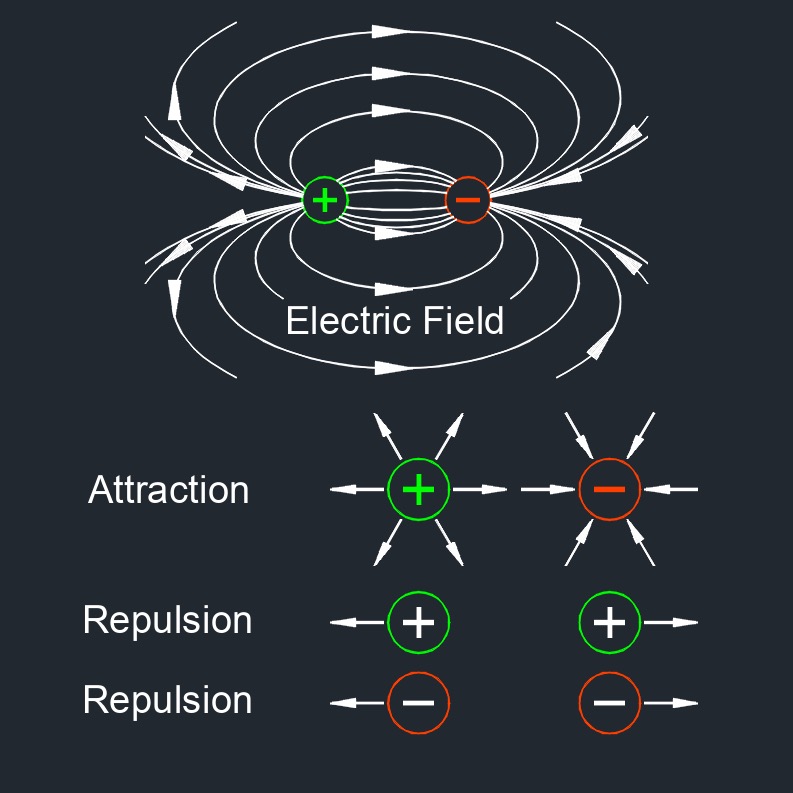Electric Force
Electric Force Formula |
||
|
\( F_e \;=\; k \cdot \dfrac{ q_1 \cdot q_2 }{ r^2 } \) (Electric Force) \( k \;=\; \dfrac{ F_e \cdot r^2 }{ q_1 \cdot q_2 } \) \( q_1 \;=\; \dfrac{ F_e \cdot r^2 }{ k \cdot q_2 } \) \( q_2 \;=\; \dfrac{ F_e \cdot r^2 }{ k \cdot q_1 } \) \( r \;=\; \sqrt{ \dfrac{ k \cdot q_1 \cdot q_2 }{ F_e } }\) |
||
|
Symbol |
English | Metric |
| \( F_e \) = Electric Force Between the Charges | \(lbf\) | \(N\) |
| \( k \) = Coulomb's constant (See Physics Constants) | \(constant\) | \(constant\) |
| \( q_1, q_2 \) = Magnitudes of the Change | \(dimensionless\) | \(dimensionless\) |
| \( r \) = Separation Distance Between the Charges | \(in\) | \(mm\) |

Electric force, abbreviated as \( F_e \), also called Coulombic force, is the force of attraction or repulsion between charged particles due to their electric charge. The electric force is one of the forces in nature and plays a key role in the behavior of charged particles. The strength and direction of the electric force depend on the magnitudes and signs of the charges involved.
The magnitude of the electric force is directly proportional to the product of the magnitudes of the charges and inversely proportional to the square of the distance between them. The direction of the electric force is along the line joining the two charges. If the charges have the same sign (both positive or both negative), the force is repulsive; if the charges have opposite signs, the force is attractive. The total electric force on a charged particle is the vector sum of the individual electric forces acting on it due to all other charged particles in the vicinity.
Electric forces are used in understanding the behavior of charged particles in various phenomena, including the operation of electronic devices, the structure of atoms and molecules, and the interactions in electric circuits.

